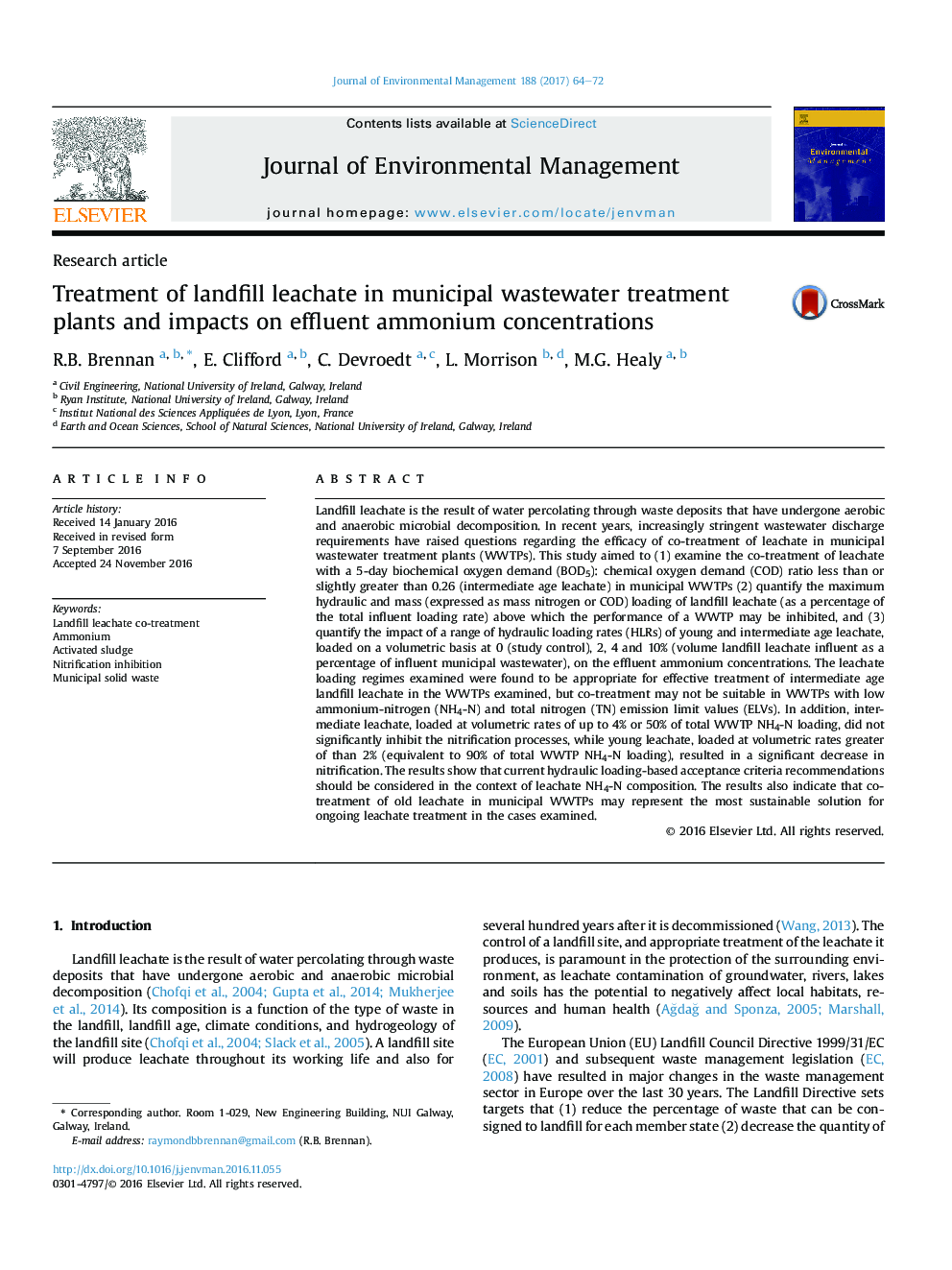| Article ID | Journal | Published Year | Pages | File Type |
|---|---|---|---|---|
| 5117125 | Journal of Environmental Management | 2017 | 9 Pages |
Abstract
Landfill leachate is the result of water percolating through waste deposits that have undergone aerobic and anaerobic microbial decomposition. In recent years, increasingly stringent wastewater discharge requirements have raised questions regarding the efficacy of co-treatment of leachate in municipal wastewater treatment plants (WWTPs). This study aimed to (1) examine the co-treatment of leachate with a 5-day biochemical oxygen demand (BOD5): chemical oxygen demand (COD) ratio less than or slightly greater than 0.26 (intermediate age leachate) in municipal WWTPs (2) quantify the maximum hydraulic and mass (expressed as mass nitrogen or COD) loading of landfill leachate (as a percentage of the total influent loading rate) above which the performance of a WWTP may be inhibited, and (3) quantify the impact of a range of hydraulic loading rates (HLRs) of young and intermediate age leachate, loaded on a volumetric basis at 0 (study control), 2, 4 and 10% (volume landfill leachate influent as a percentage of influent municipal wastewater), on the effluent ammonium concentrations. The leachate loading regimes examined were found to be appropriate for effective treatment of intermediate age landfill leachate in the WWTPs examined, but co-treatment may not be suitable in WWTPs with low ammonium-nitrogen (NH4-N) and total nitrogen (TN) emission limit values (ELVs). In addition, intermediate leachate, loaded at volumetric rates of up to 4% or 50% of total WWTP NH4-N loading, did not significantly inhibit the nitrification processes, while young leachate, loaded at volumetric rates greater of than 2% (equivalent to 90% of total WWTP NH4-N loading), resulted in a significant decrease in nitrification. The results show that current hydraulic loading-based acceptance criteria recommendations should be considered in the context of leachate NH4-N composition. The results also indicate that co-treatment of old leachate in municipal WWTPs may represent the most sustainable solution for ongoing leachate treatment in the cases examined.
Related Topics
Physical Sciences and Engineering
Energy
Renewable Energy, Sustainability and the Environment
Authors
R.B. Brennan, E. Clifford, C. Devroedt, L. Morrison, M.G. Healy,
